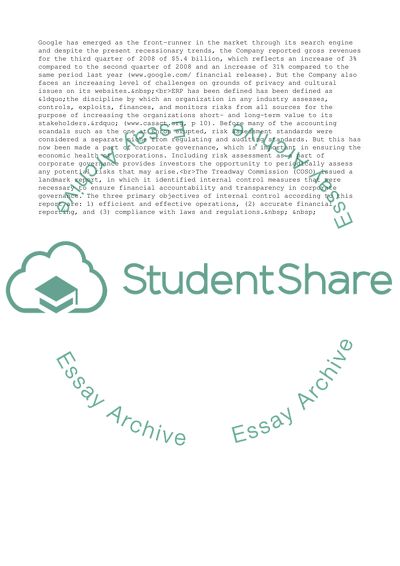Cite this document
(“Enterprise Risk Management at Google Research Paper”, n.d.)
Enterprise Risk Management at Google Research Paper. Retrieved from https://studentshare.org/management/1721305-enterprise-risk-management
Enterprise Risk Management at Google Research Paper. Retrieved from https://studentshare.org/management/1721305-enterprise-risk-management
(Enterprise Risk Management at Google Research Paper)
Enterprise Risk Management at Google Research Paper. https://studentshare.org/management/1721305-enterprise-risk-management.
Enterprise Risk Management at Google Research Paper. https://studentshare.org/management/1721305-enterprise-risk-management.
“Enterprise Risk Management at Google Research Paper”, n.d. https://studentshare.org/management/1721305-enterprise-risk-management.


